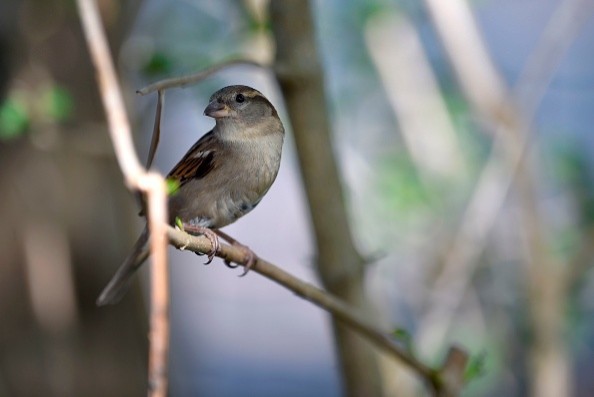According to recent research, Europe has 247 million fewer house sparrows than in 1980 and other bird species that were once ubiquitous have experienced great declines.

Species Vanishing From the Skies
In fewer than four decades, one in every six birds has vanished. Yellow wagtails - 97m fewer, starlings - 75m fewer - and skylarks which is 68m fewer are among the common species disappearing.
The RSPB, BirdLife International, and the Czech Society for Ornithology studied data from 378 of 445 bird species belonging to the EU and UK, finding that total breeding bird abundance fell between 1980 and 2017.
Species connected with farms have had the greatest total as well as proportional decline in the populations of bird.
The house sparrow has lost half its population, whereas the tree sparrow has lost 30 million birds. Both species have dropped due to changing agricultural techniques, while house sparrows have disappeared from many cities due to food shortages, illnesses including avian malaria, and air pollution.
Many species have dropped due to habitat degradation and chemical farming, but long-distance migrants like the willow warbler and yellow wagtail have decreased proportionally more than other groups. Lapwings and dotterels have also declined.
How Can Decline in Bird Populations be Stopped?
Fiona Burns, principal author and senior conservation biologist at the RSPB, said the report is a wake-up call to the prospect of extinctions.
Burns said the UN convention on biological diversity convening next year is critical to averting extinctions and restoring species abundance.
"We need transformative action across society to tackle the nature and climate crises together. That means increasing the scale and ambition of nature-friendly farming, species protection, sustainable forestry and fisheries, and rapidly expanding the protected area network," She continued.
While 900 million birds perished, 203 of the 378 investigated species grew. sixty-six percent of the 340 million more birds were from eight booming species - blackcap, woodpigeon (robin), goldfinch (goldfinch), wren (wren), chiffchaff (chiffchaff).
11 species of raptors have had population increases since 1980, including the peregrine falcon, marsh harrier, buzzard, white-tailed eagle, and golden eagle.
Increased protection, reduced pesticide use, and targeted species restoration initiatives have helped these raptors, say scientists. The EU's Birds Directive and Habitats Directive have also offered legal protection to priority bird species and habitats.
While rates of decrease in many species have moderated in the past decade, the analysis confirms recent losses in biodiversity.

How Human Activity Contributes to Birds' Diappearance
A similar fall in North America, where 3 billion birds have vanished since 1970, has occurred in Europe.
BirdLife Europe Anna Staneva, an interim leader of conservation said: "This report loudly and clearly shows that nature is sounding the alarm. While protecting birds that are already rare or endangered has resulted in some successful recoveries, this doesn't seem to be enough to sustain the populations of abundant species."
Common birds are getting rarer as people destroy their habitats. Nature is gone from our farms, seas, and towns. Europe's governments must set legally enforceable objectives for nature restoration.
House sparrows are prevalent around human habitations. In these places they serve as an important prey base for birds of prey and they may have an influence on plant ecosystems since they devour enormous volumes of seeds.
House sparrows adversely harm populations of native species, such as bluebirds, chickadees, cliff swallows, and certain woodpeckers. House sparrows take over the nesting holes of native species, even forcefully chasing adults and nestlings.
For more news, updates about house sparrows and similar topics don't forget to follow Nature World News!
© 2025 NatureWorldNews.com All rights reserved. Do not reproduce without permission.





